Now Reading: Mural Adds Beauty and Meaningful Message to West Hartford Building – We-Ha
- 01
Mural Adds Beauty and Meaningful Message to West Hartford Building – We-Ha

Mural Adds Beauty and Meaningful Message to West Hartford Building – We-Ha
Art students and their professors designed and created a mural that is now hanging on the east side of The Camelot on Farmington Avenue in West Hartford.
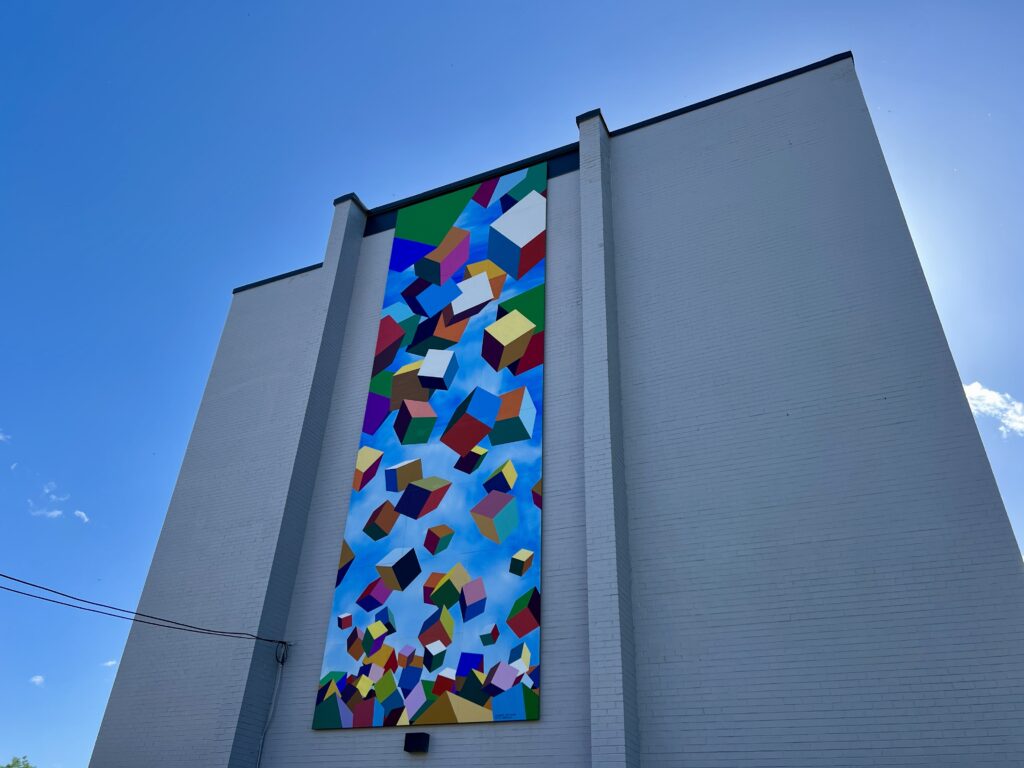
The installation of a mural on the east side of The Camelot was completed on May 10, 2025. Photo credit: Ronni Newton
By Ronni Newton
On a dreary May afternoon, a few days before The Camelot’s planned grand opening celebration and ribbon cutting, a contractor was working in the pouring rain on an installation that would not only brighten up a blank side of the new 44-unit apartment building and the surrounding neighborhood with vibrant color, but would also provide an important visual message.
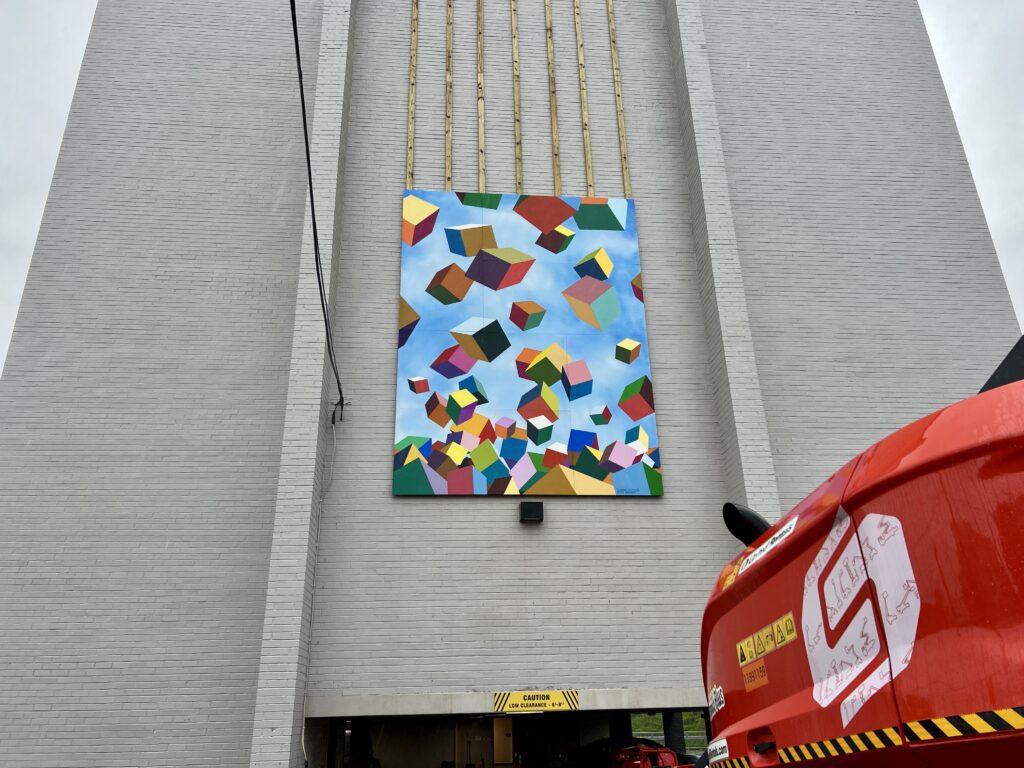
Mural on the side of The Camelot in West Hartford in the process of being installed on Friday, May 9, 2025. Photo credit: Ronni Newton
“It’s a cascade, where the pieces are all fitting together into the matrix of finding a new home,” Peter Bonadies, an artist and professor at Connecticut State Community College, Gateway, in New Haven, said of the cubes in the mural, which fit together like the pieces in a game of Tetris.
“The pieces are all coming into place as people are finding a new home,” said Steve Caprio of Honeycomb Real Estate Partners, which developed The Camelot in partnership with Vesta Corporation, Corridor Ventures, and Vallone Ventures.
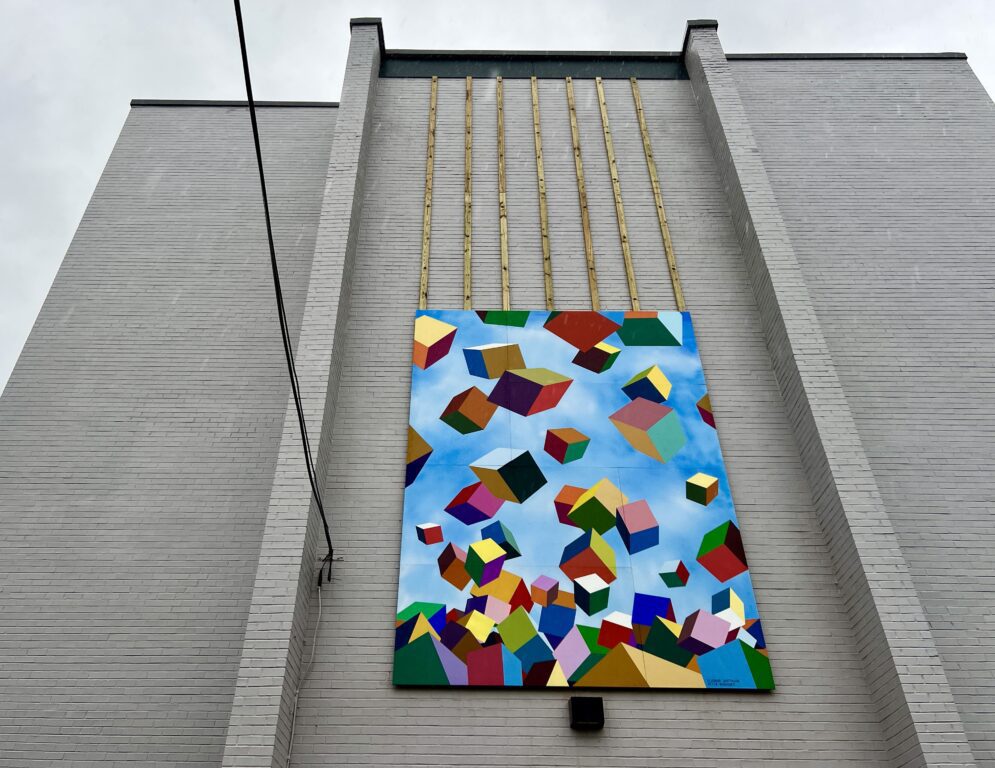
Mural on the side of The Camelot in West Hartford in the process of being installed on Friday, May 9, 2025. Photo credit: Ronni Newton
Lewis Brown, principal of Honeycomb Real Estate Partners, said the mural has meaning from the perspective of financing affordable housing as well. “If a single piece doesn’t work, it can all fall apart,” he said of the complex and multi-layered financing needed for a project such as The Camelot.
Vladimir Shpitalnik, also an artist and professor at Gateway, created the design for the mural, first as a watercolor. The mural – which is 12-feet-by-36-feet – has 130 different colors, he said – and he knows the exact number because he hand-mixed them all.
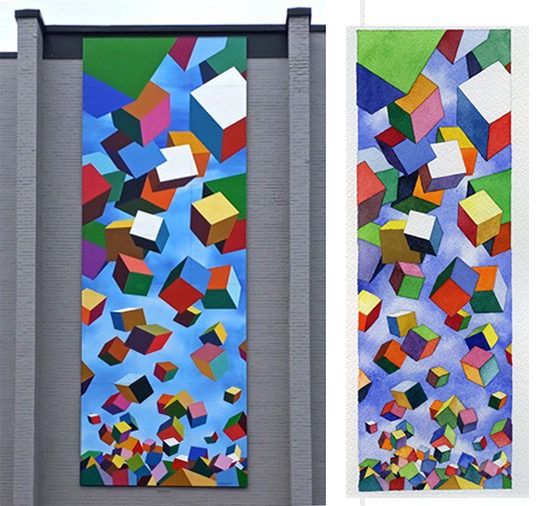
Final installation of mural on The Camelot and watercolor rendering. Courtesy of Vladimir Shpitalnik
“One of the things we loved about it were the colors, how vibrant it is,” Brown said.
Students at Gateway did the actual painting on wooden panels that were then sealed and are now installed on the side of the building. The installation was completed on Saturday, May 10.
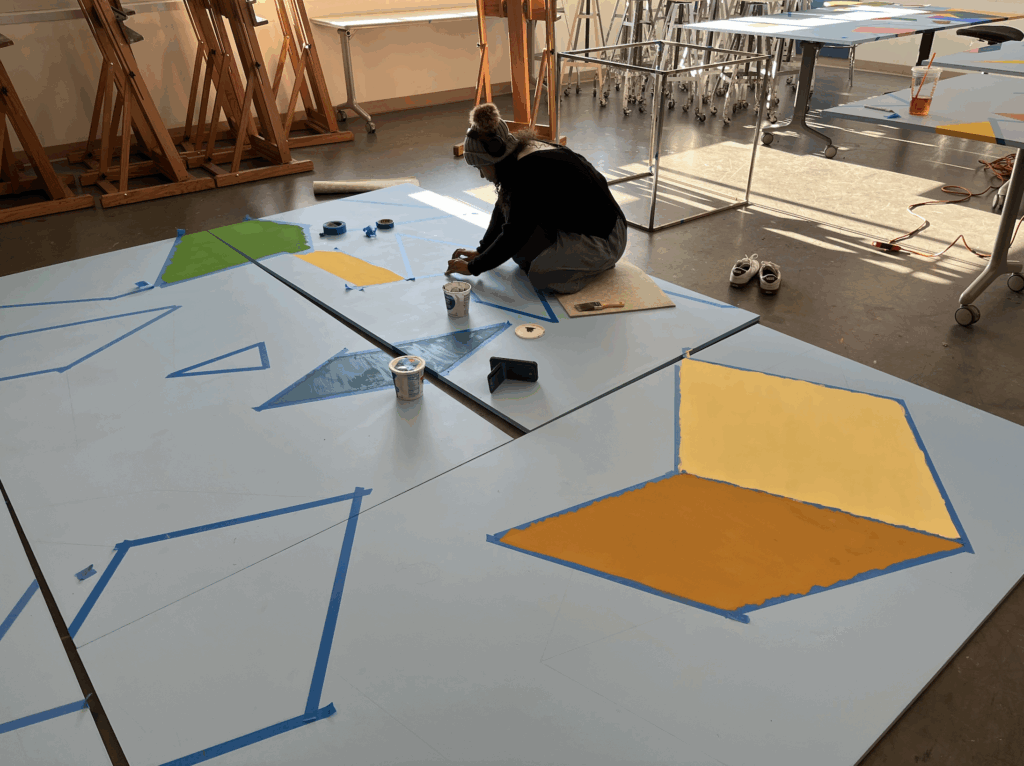
Students at Gateway work on panels of a mural for future installation at The Camelot in West Hartford. Courtesy of Peter Bonadies
Six of the students plan to attend Monday’s grand opening of a project that West Hartford and the state have touted as a success on so many levels. Lt. Gov. Susan Bysiewicz plans to attend the ribbon cutting, along with U.S. Sen. Richard Blumenthal, the commissioner of the Department of Housing, the head of the Connecticut Housing Finance Administration, representatives of the Connecticut State Community College system, and officials from the Department of Economic and Community Development as well as local officials and many others.
The Camelot has risen from the remains of a rundown 1960s-era hotel and vacant restaurant – the latter of which had been built on what was formerly a gas station and auto repair shop. When the restaurant building – most recently occupied as Los Imperios – was constructed, a slab covered up a massive underground storage tank that was still filled with diesel fuel when it was unearthed in January 2024 as the project construction got underway.
The Town of West Hartford, through the Connecticut Department of Economic and Community Development’s Municipal Brownfield Grant Program, received $998,000 to assist with the remediation and environmental rehabilitation of the property.
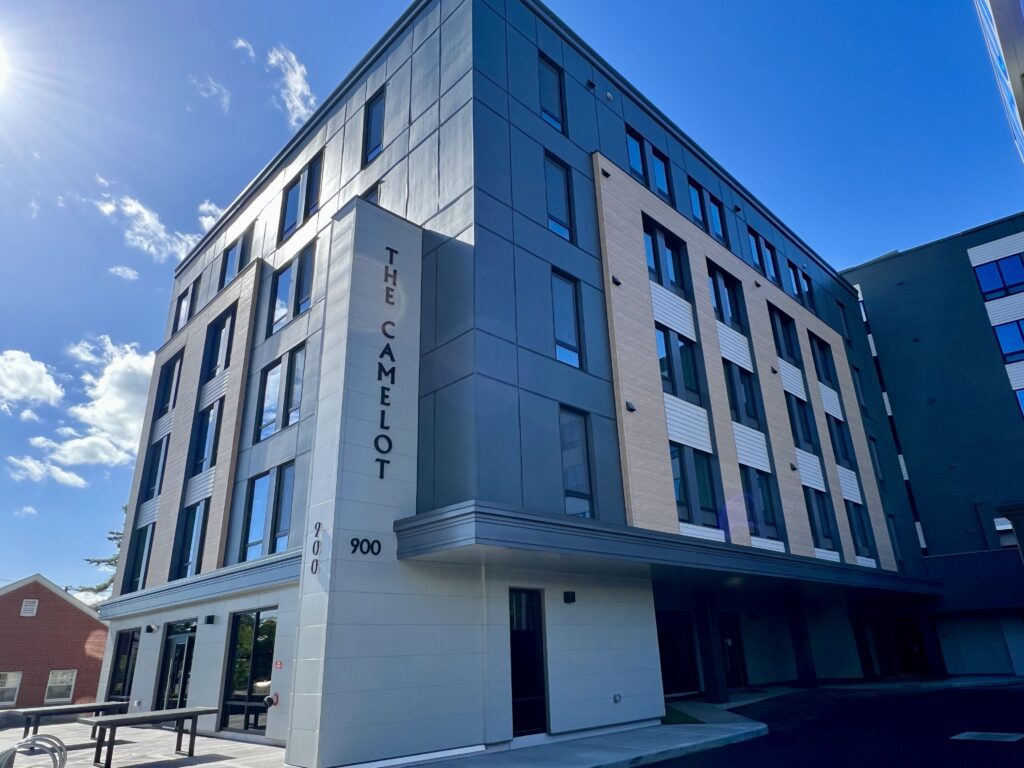
The Camelot. 900 Farmington Avenue, West Hartford. Photo credit: Ronni Newton
The Camelot includes 44 apartments, a combination of new construction on the portion of the property that was most recently Los Imperios, and an adaptive re-use and renovation of what was formerly the 52-unit West Hartford Inn. The 44 units will be a mix of 24 one-bedroom (525 square feet) and 20 two-bedroom units (985 square feet), and the new construction portion is completely two-bedroom apartments while the renovated portion includes both size units.
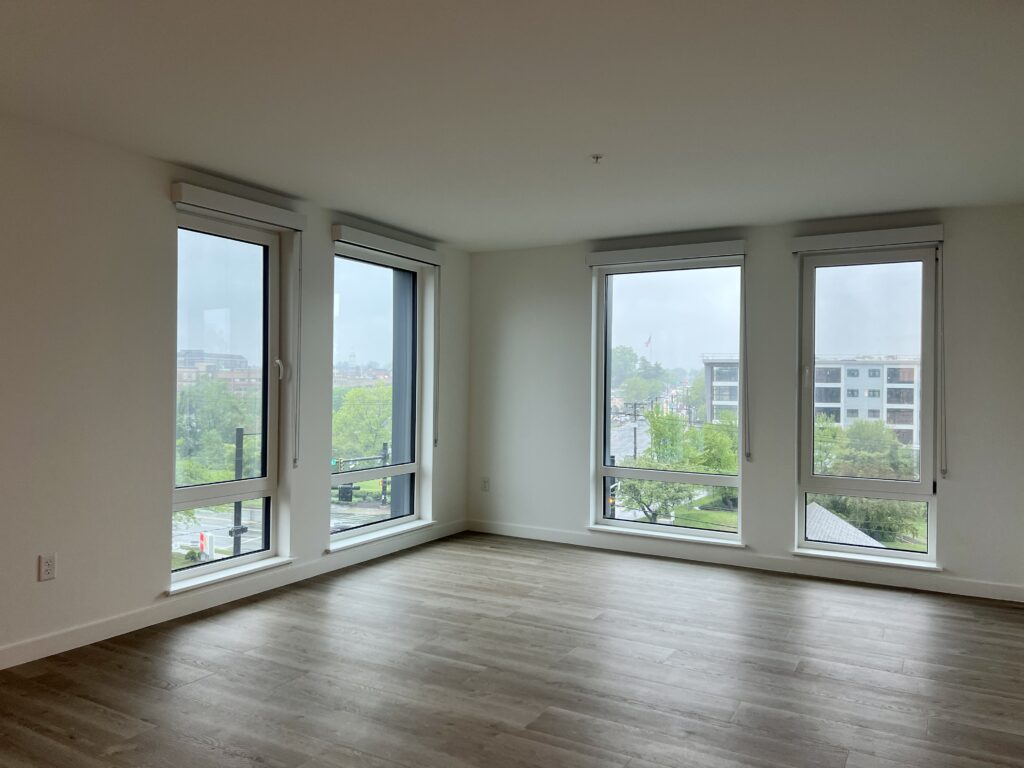
Large windows in a corner unit of The Camelot. Photos credit: Ronni Newton
The building includes a fitness center and computer room, all of which is included in the residents’ rent. All units have plenty of natural light through large windows, and the same finishes and amenities, which include stainless steel appliances, granite countertops, gray subway tile backsplashes, and luxury vinyl flooring.
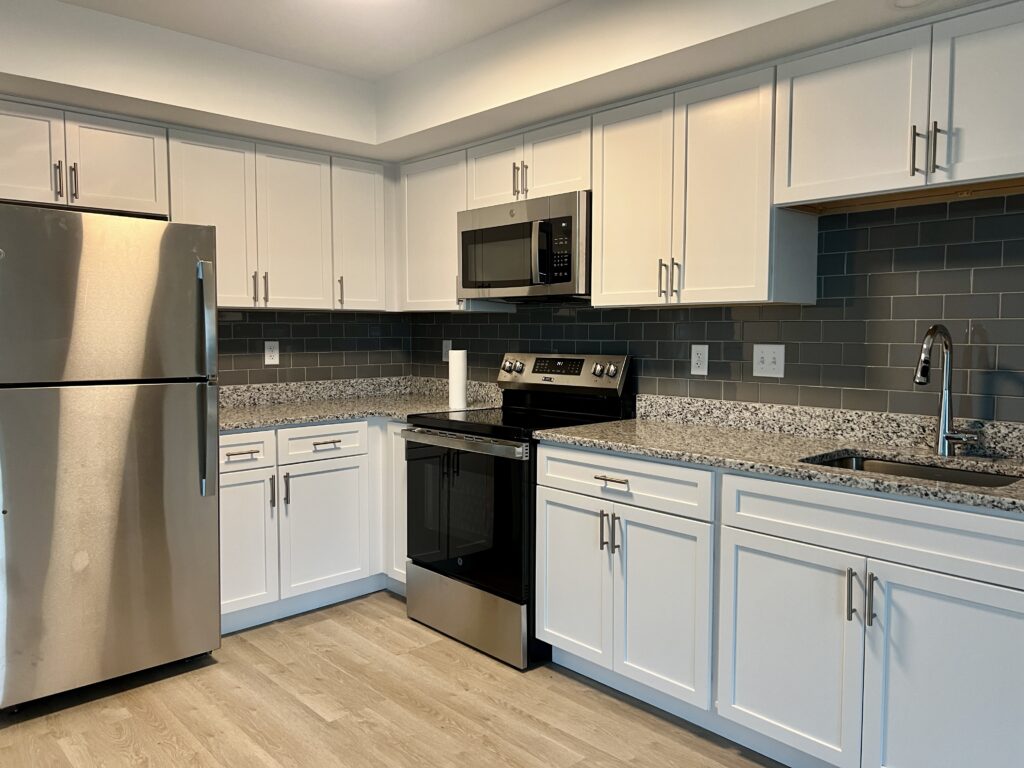
Kitchen in one of the two-bedroom units at The Camelot. Photo credit: Ronni Newton
All of the units at The Camelot are affordable housing for residents at various levels of income eligibility, ranging from those earning less than 30% of area median income (AMI) to 80% of AMI. Brown said they received 3,000 applications for the 13 units that are for those earning 30% AMI, and a third-party lottery was used to make the process equitable. All of the 30% AMI units utilize project-based vouchers through the West Hartford Housing Authority, he said.
In March, several of the students who participated in the project visited the West Hartford site with Bonadies and Shpitalnik to gain appreciation on context of their artwork in the community.
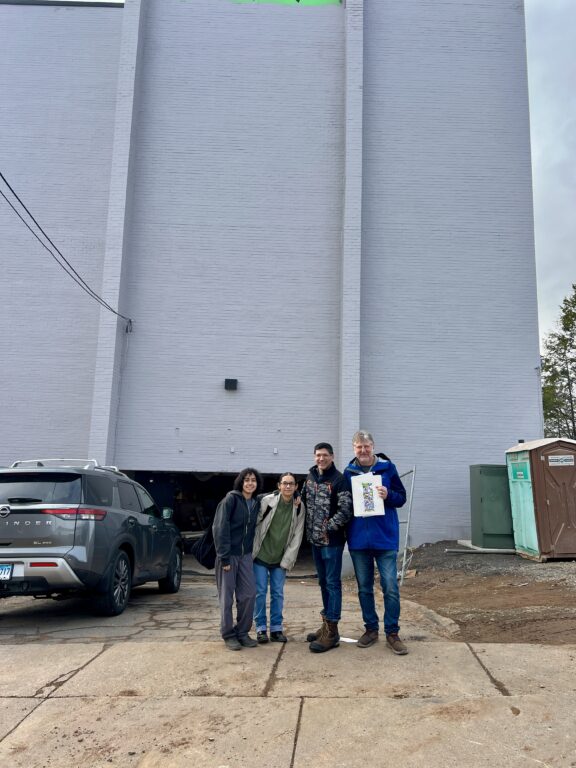
In March 2025, Gateway students (from left) Ariana Silva and Samantha Segui, and professors Peter Bonadies and Vladimir Shpitalnik hold the rendering of the mural in front of the area on the side of The Camelot in West Hartford, where it would be installed. Photo credit: Ronni Newton
“It’s awesome that I had a hand in something, and everyone’s going to see it,” said Gateway student Samatha Segui. “In this area there’s not much color,” she said as she looked up and down Arnold Way, the side street that runs along the east side of The Camelot.
“It’s also cool because it’s so big,” added student Ariana Silva.
Students volunteered for this particular painting project, beginning during their holiday break in December, spending countless hours working mostly on Fridays through March to complete the painting of Shpitalnik’s design, which had been chosen from among five variations on the geometric concept shown to the developers. Some of the students who contributed weren’t even enrolled in courses being taught by Bonadies or Shpitalnik.
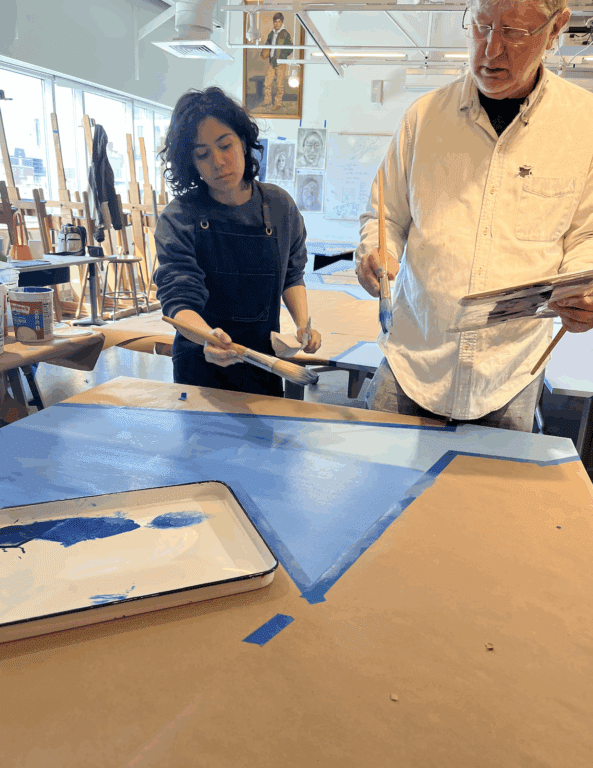
A student at Gateway works with artist Vladimir Shpitalnik on panels of a mural for future installation at The Camelot in West Hartford. Courtesy of Peter Bonadies
“It’s good experience because we want to be artists in the industry,” said Segui, who lives in New Haven.
“We strive to make real-world art-making for our students,” said Bonadies. The students get involved with the clients, the development of a concept, finalization of the design, creation of the art, and the installation.”The students are here every step of the way,” he said.
“Our goal is to do this as a partnership with developers and corporations,” said Bonadies, who first connected with Brown through a previous project in New Haven. Now that the Connecticut State Community College system has merged the various schools, courses on “art in public spaces” will be added at other colleges throughout the state.
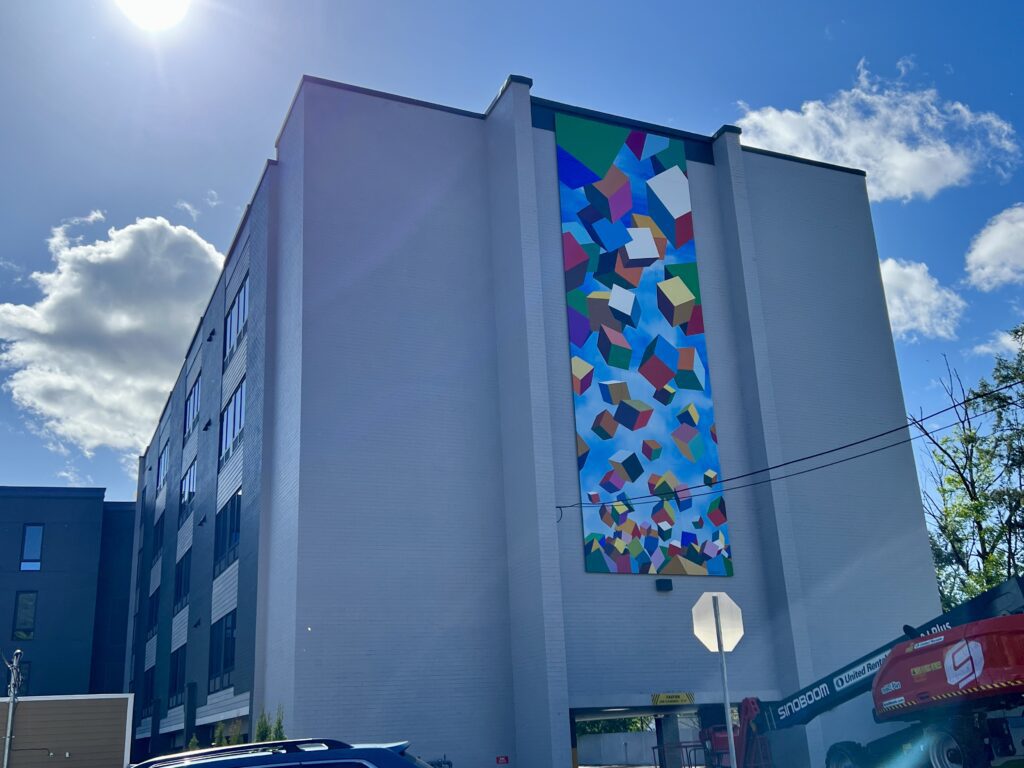
Mural on the Arnold Way side of The Camelot in West Hartford. Photo credit: Ronni Newton
“This is an incredible relationship that we’ve built here. We hope to do more,” Bonadies said. “The gem of our teaching is these projects. It really enhances our connection to the communities.” Some of the students taking courses are the first in their families to experience higher education. Seeing how they can have such a visible impact on a community is so uplifting, he said. “The students now have their heads up, they’re transformed,” he said.
“It’s really neat to create those connections and relationships,” Brown added, noting that it’s likely there will be teachers living in The Camelot, and it’s a connection to them as well.
Murals have been proliferating in communities throughout the state and country, and Bonadies said it’s a continuation of a trend that started in the 1960s, “to get art out of the galleries.”
“More and more it’s becoming a big part of cities. It’s just booming,” said Shpitalnik.
“It can really lift up some areas,” added Caprio.
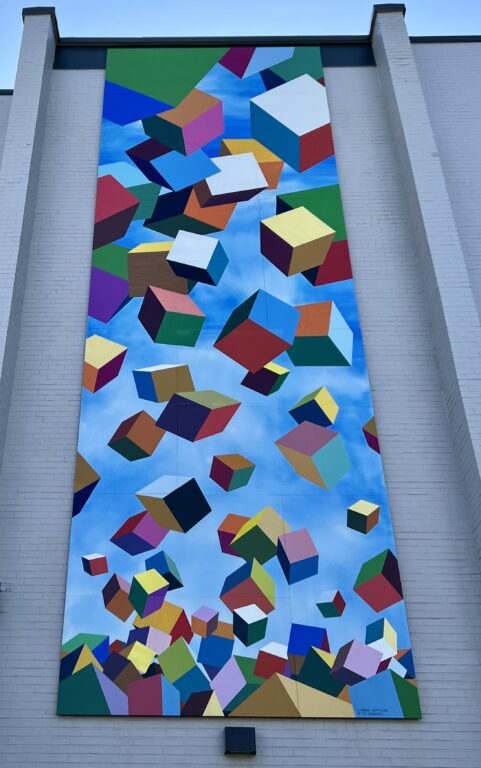
The installation of a mural on the east side of The Camelot was completed on May 10, 2025. Photo credit: Ronni Newton
Brown’s perspective on housing mirrors the professors’ belief of the transformative ability of art. Providing safe, affordable, and attractive housing like The Camelot to those who may not otherwise have ever lived in a place this nice, “will have a positive impact on someone’s life,” he said Friday.
Bonadies said that Brown is an artist in his own right. “It absolutely takes an artist to take a Brownfield hotel and abandoned restaurant and imagine this,” he said of the brand new building, which will soon be filled with residents.
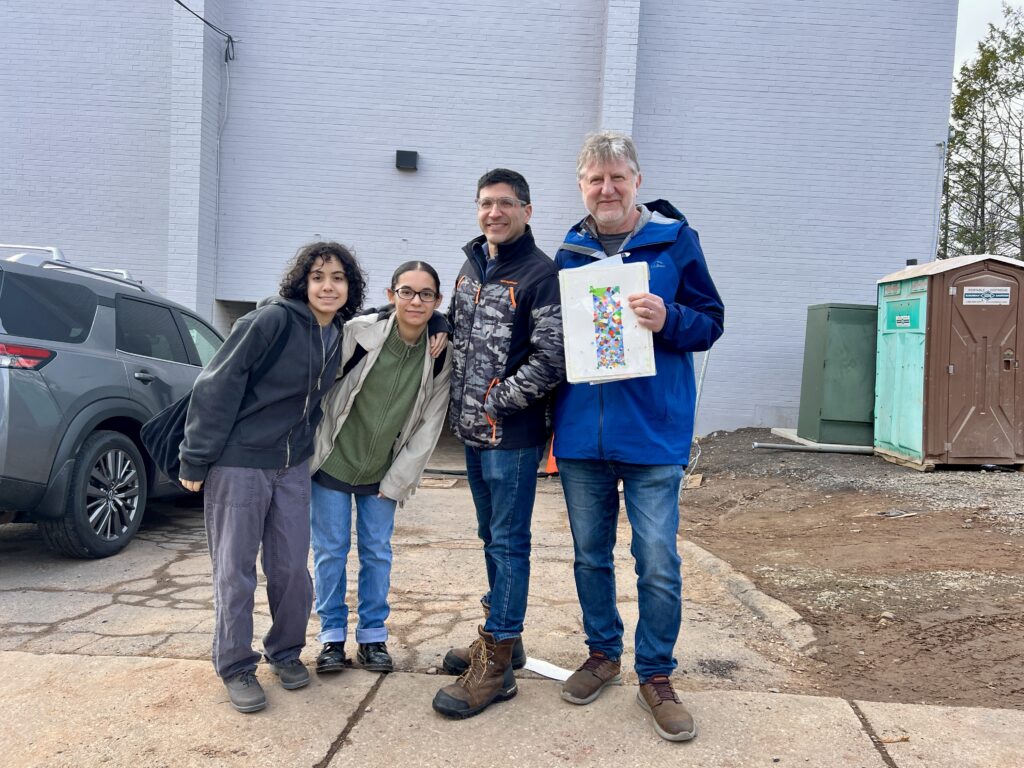
In March 2025, Gateway students (from left) Ariana Silva and Samantha Segui, and professors Peter Bonadies and Vladimir Shpitalnik hold the rendering of the mural in front of the area on the side of The Camelot in West Hartford, where it would be installed. Photo credit: Ronni Newton
Like what you see here? Click here to subscribe to We-Ha’s newsletter so you’ll always be in the know about what’s happening in West Hartford! Click the blue button below to become a supporter of We-Ha.com and our efforts to continue producing quality journalism.















